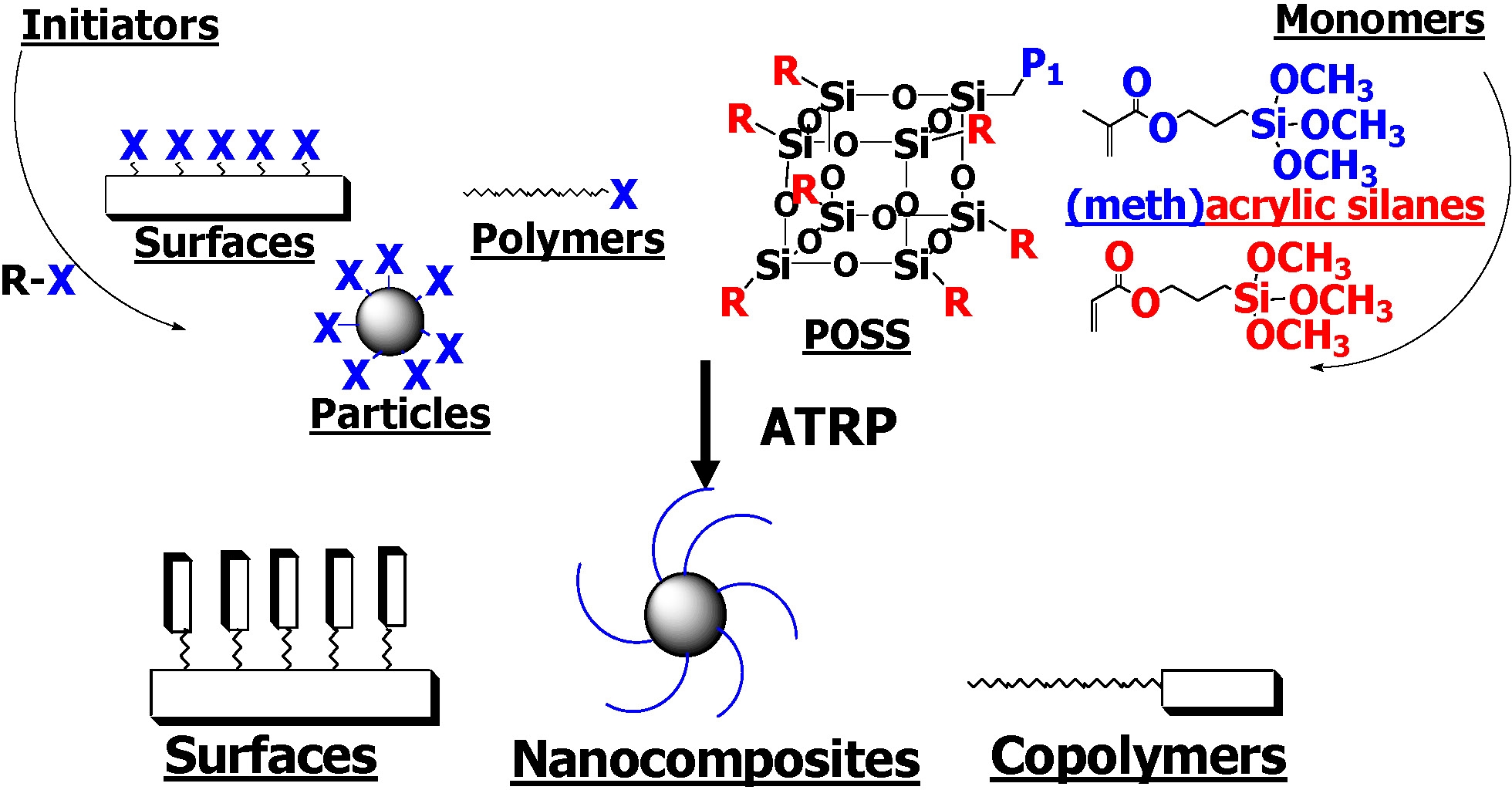Nanocomposites
Review Articles
In the broader sense any biphasic material where each phase has a well defined structure, i.e. tens of nanometers in size, is a nanocomposite. In this section of our web page we are concerned with the synthesis of organic/inorganic hybrid materials which is an area of growing interest as the useful properties of disparate components can be combined into a single material.
Controlled/"Living" Radical Polymerization (CRP) has been shown to be suitable for the preparation of organic/inorganic hybrid materials with varying structural complexity on nano-, meso- and micro-scopic dimensions. Atom transfer radical polymerization (ATRP) has been particularly successful for the synthesis of nano-composite structures since inorganic particles and substrates can be easily functionalized with either polymerizable groups, or initiating alkyl halides and the resulting functional inorganic material is suitable for use in the CRP of organic vinyl monomers.(1-7)

Target applications include: surfactants, elastomers, opto/magnetic materials, sensors, reinforced ultra-thin films and patterned surfaces.
REFERENCES
(1) Pyun, J.; Matyjaszewski, K. Chem. Mater. 2001, 13, 3436-3448.
(2) Pyun, J.; Kowalewski, T.; Matyjaszewski, K. Macromolecular Rapid Communications 2003, 24, 1043-1059.
(3) Pyun, J.; Xia, J.; Matyjaszewski, K. ACS Symposium Series 2003, 838, 273-284.
(4) Pyun, J.; Kowalewski, T.; Matyjaszewski, K. Polymer Brushes 2004, 51-68.
(5) Matyjaszewski, K. NATO Science Series, II: Mathematics, Physics and Chemistry 2004, 175, 123-134.
(6) Matyjaszewski, K.; Dong, H.; Jakubowski, W.; Pietrasik, J.; Kusumo, A. Langmuir 2007, 23, 4528-4531.
(7) Bombalski, L.; Min, K.; Dong, H.; Tang, C.; Matyjaszewski, K. Macromolecules 2007, 40, 7429-7432.
